Fannie Mae 2009 Annual Report Download - page 13
Download and view the complete annual report
Please find page 13 of the 2009 Fannie Mae annual report below. You can navigate through the pages in the report by either clicking on the pages listed below, or by using the keyword search tool below to find specific information within the annual report.-
 1
1 -
 2
2 -
 3
3 -
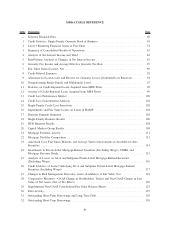 4
4 -
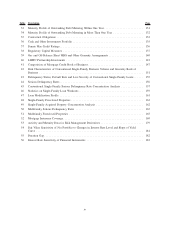 5
5 -
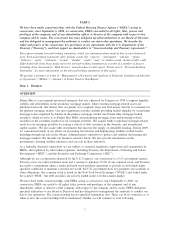 6
6 -
 7
7 -
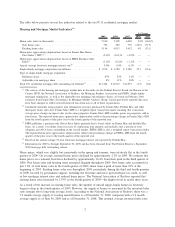 8
8 -
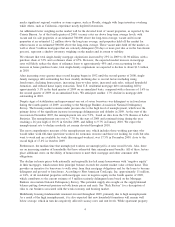 9
9 -
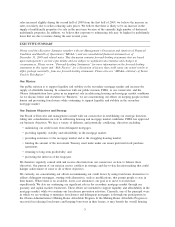 10
10 -
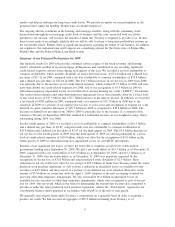 11
11 -
 12
12 -
 13
13 -
 14
14 -
 15
15 -
 16
16 -
 17
17 -
 18
18 -
 19
19 -
 20
20 -
 21
21 -
 22
22 -
 23
23 -
 24
24 -
 25
25 -
 26
26 -
 27
27 -
 28
28 -
 29
29 -
 30
30 -
 31
31 -
 32
32 -
 33
33 -
 34
34 -
 35
35 -
 36
36 -
 37
37 -
 38
38 -
 39
39 -
 40
40 -
 41
41 -
 42
42 -
 43
43 -
 44
44 -
 45
45 -
 46
46 -
 47
47 -
 48
48 -
 49
49 -
 50
50 -
 51
51 -
 52
52 -
 53
53 -
 54
54 -
 55
55 -
 56
56 -
 57
57 -
 58
58 -
 59
59 -
 60
60 -
 61
61 -
 62
62 -
 63
63 -
 64
64 -
 65
65 -
 66
66 -
 67
67 -
 68
68 -
 69
69 -
 70
70 -
 71
71 -
 72
72 -
 73
73 -
 74
74 -
 75
75 -
 76
76 -
 77
77 -
 78
78 -
 79
79 -
 80
80 -
 81
81 -
 82
82 -
 83
83 -
 84
84 -
 85
85 -
 86
86 -
 87
87 -
 88
88 -
 89
89 -
 90
90 -
 91
91 -
 92
92 -
 93
93 -
 94
94 -
 95
95 -
 96
96 -
 97
97 -
 98
98 -
 99
99 -
 100
100 -
 101
101 -
 102
102 -
 103
103 -
 104
104 -
 105
105 -
 106
106 -
 107
107 -
 108
108 -
 109
109 -
 110
110 -
 111
111 -
 112
112 -
 113
113 -
 114
114 -
 115
115 -
 116
116 -
 117
117 -
 118
118 -
 119
119 -
 120
120 -
 121
121 -
 122
122 -
 123
123 -
 124
124 -
 125
125 -
 126
126 -
 127
127 -
 128
128 -
 129
129 -
 130
130 -
 131
131 -
 132
132 -
 133
133 -
 134
134 -
 135
135 -
 136
136 -
 137
137 -
 138
138 -
 139
139 -
 140
140 -
 141
141 -
 142
142 -
 143
143 -
 144
144 -
 145
145 -
 146
146 -
 147
147 -
 148
148 -
 149
149 -
 150
150 -
 151
151 -
 152
152 -
 153
153 -
 154
154 -
 155
155 -
 156
156 -
 157
157 -
 158
158 -
 159
159 -
 160
160 -
 161
161 -
 162
162 -
 163
163 -
 164
164 -
 165
165 -
 166
166 -
 167
167 -
 168
168 -
 169
169 -
 170
170 -
 171
171 -
 172
172 -
 173
173 -
 174
174 -
 175
175 -
 176
176 -
 177
177 -
 178
178 -
 179
179 -
 180
180 -
 181
181 -
 182
182 -
 183
183 -
 184
184 -
 185
185 -
 186
186 -
 187
187 -
 188
188 -
 189
189 -
 190
190 -
 191
191 -
 192
192 -
 193
193 -
 194
194 -
 195
195 -
 196
196 -
 197
197 -
 198
198 -
 199
199 -
 200
200 -
 201
201 -
 202
202 -
 203
203 -
 204
204 -
 205
205 -
 206
206 -
 207
207 -
 208
208 -
 209
209 -
 210
210 -
 211
211 -
 212
212 -
 213
213 -
 214
214 -
 215
215 -
 216
216 -
 217
217 -
 218
218 -
 219
219 -
 220
220 -
 221
221 -
 222
222 -
 223
223 -
 224
224 -
 225
225 -
 226
226 -
 227
227 -
 228
228 -
 229
229 -
 230
230 -
 231
231 -
 232
232 -
 233
233 -
 234
234 -
 235
235 -
 236
236 -
 237
237 -
 238
238 -
 239
239 -
 240
240 -
 241
241 -
 242
242 -
 243
243 -
 244
244 -
 245
245 -
 246
246 -
 247
247 -
 248
248 -
 249
249 -
 250
250 -
 251
251 -
 252
252 -
 253
253 -
 254
254 -
 255
255 -
 256
256 -
 257
257 -
 258
258 -
 259
259 -
 260
260 -
 261
261 -
 262
262 -
 263
263 -
 264
264 -
 265
265 -
 266
266 -
 267
267 -
 268
268 -
 269
269 -
 270
270 -
 271
271 -
 272
272 -
 273
273 -
 274
274 -
 275
275 -
 276
276 -
 277
277 -
 278
278 -
 279
279 -
 280
280 -
 281
281 -
 282
282 -
 283
283 -
 284
284 -
 285
285 -
 286
286 -
 287
287 -
 288
288 -
 289
289 -
 290
290 -
 291
291 -
 292
292 -
 293
293 -
 294
294 -
 295
295 -
 296
296 -
 297
297 -
 298
298 -
 299
299 -
 300
300 -
 301
301 -
 302
302 -
 303
303 -
 304
304 -
 305
305 -
 306
306 -
 307
307 -
 308
308 -
 309
309 -
 310
310 -
 311
311 -
 312
312 -
 313
313 -
 314
314 -
 315
315 -
 316
316 -
 317
317 -
 318
318 -
 319
319 -
 320
320 -
 321
321 -
 322
322 -
 323
323 -
 324
324 -
 325
325 -
 326
326 -
 327
327 -
 328
328 -
 329
329 -
 330
330 -
 331
331 -
 332
332 -
 333
333 -
 334
334 -
 335
335 -
 336
336 -
 337
337 -
 338
338 -
 339
339 -
 340
340 -
 341
341 -
 342
342 -
 343
343 -
 344
344 -
 345
345 -
 346
346 -
 347
347 -
 348
348 -
 349
349 -
 350
350 -
 351
351 -
 352
352 -
 353
353 -
 354
354 -
 355
355 -
 356
356 -
 357
357 -
 358
358 -
 359
359 -
 360
360 -
 361
361 -
 362
362 -
 363
363 -
 364
364 -
 365
365 -
 366
366 -
 367
367 -
 368
368 -
 369
369 -
 370
370 -
 371
371 -
 372
372 -
 373
373 -
 374
374 -
 375
375 -
 376
376 -
 377
377 -
 378
378 -
 379
379 -
 380
380 -
 381
381 -
 382
382 -
 383
383 -
 384
384 -
 385
385 -
 386
386 -
 387
387 -
 388
388 -
 389
389 -
 390
390 -
 391
391 -
 392
392 -
 393
393 -
 394
394 -
 395
395
 |
 |
Credit Overview
We discuss below in this section a number of steps we have taken to minimize our credit losses from
delinquent mortgages in our guaranty book of business. Under the heading “Homeowner Assistance
Initiatives” below, we provide more detailed information on our work to expand refinance opportunities for
borrowers and to help homeowners keep their homes, or at least avoid foreclosure.
2009 Acquisitions
In addition to our efforts, discussed below, to minimize credit losses on loans already in our book, during
2008 and early 2009 we made changes in our pricing and eligibility standards that helped to improve the risk
profile of our new single-family business in 2009 and support sustainable homeownership. In 2009, we
purchased or guaranteed an estimated $823.6 billion in new business, measured by unpaid principal balance.
Compared to our 2008 acquisitions, the composition of our 2009 acquisitions experienced a decline in the
average original loan-to-value (“LTV”) ratio from 72% to 67%, an increase in the average FICO credit score
from 738 to 761, and a shift in product mix to more fully amortizing fixed-rate mortgage loans. The early
performance of the single-family loans we acquired in 2009 appears stronger than loans acquired in any other
year in the past decade. While this early performance is strong, we cannot yet predict how these loans will
ultimately perform. Moreover, we expect the ultimate performance of these loans will be affected by
macroeconomic trends, including unemployment, the economy, interest rates, and house prices. As of
December 31, 2009, loans acquired in 2009 represented 23.6% of our total single family guaranty-book of
business. We expect that these loans may have relatively slow prepayment speeds, and therefore may remain
in our book of business for a relatively long time, due to the historically low interest rates available
throughout 2009, which resulted in our 2009 acquisitions overall having an average interest rate of 4.9%. In
addition to changes in our pricing and eligibility standards, our 2009 acquisitions reflect changes in the
eligibility standards of mortgage insurers, which further reduced our acquisition of loans with higher LTV
ratios. Also, the Federal Housing Administration (“FHA”) has become the lower-cost option, or in some cases
the only option, for loans with higher LTV ratios, which further reduced our acquisition of these loans. Our
2009 acquisitions profile was further enhanced by a significant increase in our acquisition of refinanced loans,
which generally have a stronger credit profile as the act of refinancing indicates the borrower’s ability and
desire to maintain homeownership. Whether our 2010 acquisitions exhibit the same credit profile as our 2009
acquisitions will depend on many factors, including our future pricing and eligibility standards, our future
objectives, mortgage insurer’s eligibility standards, and future activity by our competitors, including FHA.
Loss Mitigation Efforts
The performance of loans in our guaranty book of business deteriorated significantly during 2009 as a result
of the sustained decline in home prices, the weakened economy, and the rise in unemployment and
underemployment during the year. In order to minimize our credit losses, we believe we must (1) keep more
borrowers current on their loan payments through outreach programs to identify and assist borrowers on the
verge of delinquency; (2) prevent borrowers from defaulting on their loans through home retention strategies,
including loan modifications, repayment plans and forbearances; (3) reduce the costs associated with
foreclosures by promoting foreclosure alternatives, including preforeclosure sales and deeds-in-lieu of
foreclosure; (4) move to foreclosure expeditiously where there is no available, lower-cost alternative;
(5) expedite the sales of “REO” properties, or real-estate owned by Fannie Mae because we have obtained it
through foreclosure or a deed-in-lieu of foreclosure, and transform stagnant properties into cash generating
assets through rental and leasing programs; and (6) aggressively pursue collections on repurchase and
compensation claims due from lenders and mortgage insurers. It will be through these strong asset
management initiatives that we will achieve our stated goal of decreasing our credit losses and stabilizing
markets. We are pursuing a reduction in our credit losses through the following key activities.
• In support of homeowners who were current on their loans, we began offering expanded refinance options
through Refi Plus
TM
, which permitted over 300,000 borrowers to reduce their monthly mortgage payments
by an average of $153, and we began offering borrowers refinancing under the Home Affordable
8
